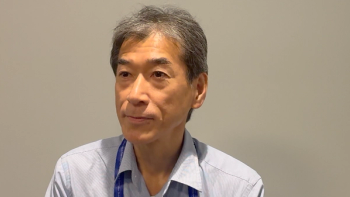
- Oncology Vol 28 No 4_Suppl_1
- Volume 28
- Issue 4_Suppl_1
(S001) Limb-Sparing Surgery and Intraoperative Radiotherapy in the Treatment of Primary, Nonmetastatic Extremity and Limb-Girdle Soft Tissue Sarcoma
To investigate the efficacy and morbidity of limb-sparing surgery with intraoperative radiotherapy (IORT) for patients with primary, nonmetastatic extremity and limb-girdle soft tissue sarcoma (STS) at high risk for recurrence.
Christopher L. Tinkle, MD, Richard J. O’Donnell, MD, Vivian Weinberg, PhD, Stuart Y. Tsuji, MD, Daphne Haas-Kogan, MD, Alexander R. Gottschalk, MD, PhD; Department of Radiation Oncology, University of California, San Francisco; Department of Orthopedic Surgery, University of California, San Francisco; Department of Radiation Oncology, The Queen’s Medical Center
Purpose: To investigate the efficacy and morbidity of limb-sparing surgery with intraoperative radiotherapy (IORT) for patients with primary, nonmetastatic extremity and limb-girdle soft tissue sarcoma (STS) at high risk for recurrence.
Materials and Methods: A retrospective analysis was performed of patients with extremity and limb-girdle STS treated with IORT following limb-sparing resection by a single orthopedic oncologist at the University of California, San Francisco, from December 1998 through November 2011. Sixty-six consecutively treated patients with primary, nonmetastatic STS were identified. Upfront oncologic resection was performed in 67% of patients, while re-resection of prior excisional biopsy was performed in 33%. Close (< 2 mm) or positive margins were found in 59% of patients. Sixty-seven percent received both IORT and external beam radiation (EBRT), with a median IORT dose of 1,250 cGy (range: 1,000–1,800 cGy) and median EBRT dose of 5,970 cGy (range: 4,140–6,660 cGy). Perioperative chemotherapy was delivered to 61% of patients. The most common histologies were synovial sarcoma and undifferentiated pleomorphic sarcoma (38% and 17%, respectively), and most tumors were high-grade (Coindre grade 2–3) (88%), deep in location (79%), and American Joint Committee on Cancer (AJCC) pathologic stage II or higher (88%). The Kaplan-Meier product limit method was used to estimate disease control and survival, subsets were compared using a log-rank statistic, and toxicity was reported according to Common Terminology Criteria for Adverse Events version 4.0 (CTCAE v4) guidelines.
Results: With a median duration of follow-up from surgery and IORT of 50.9 months (range: 11.8–141.5 mo), 13 patients developed a local recurrence, with 4 subsequently undergoing amputation. The 5-year Kaplan-Meier estimates for local control were 78% (95% confidence interval [CI], 65%–87%); 94% for amputation-free survival (95% CI, 84%–98%); 72% for metastasis-free control (95% CI, 59%–82%); 64% for disease-free survival (95% CI, 50%–75%); and 81% for overall survival (95% CI, 68%–90%). Age older than 50 years and having AJCC stage III disease resulted in increased local recurrence (P = .02 and P = .06, respectively), while other factors, including margin status, tumor grade, T stage, tumor depth, re-resection, and perioperative chemotherapy, did not impact local control. Interestingly, the addition of EBRT did not appear to significantly influence local control, with a 5-year estimate of local control for patients who did not receive EBRT of 71%, compared with 82% for those who did (P = .28). This was also the case in patients treated with perioperative chemotherapy (P = .58) and grade 3 tumors (P = .56); however, a benefit with EBRT was observed for those with close/positive margins (P = .01). Grade 3 or higher acute and late toxicities were reported in 16 and 18 patients, respectively.
Conclusions: IORT in combination with oncologic resection of high-risk extremity and limb-girdle STS yields excellent rates of local control and limb salvage with acceptable morbidity. This technique offers a method of delivering focal therapy to reduce the risk associated with close/positive margins while maintaining adequate local control with relatively reduced-dose EBRT.
Proceedings of the 96th Annual Meeting of the American Radium Society -
Articles in this issue
Newsletter
Stay up to date on recent advances in the multidisciplinary approach to cancer.




















































































